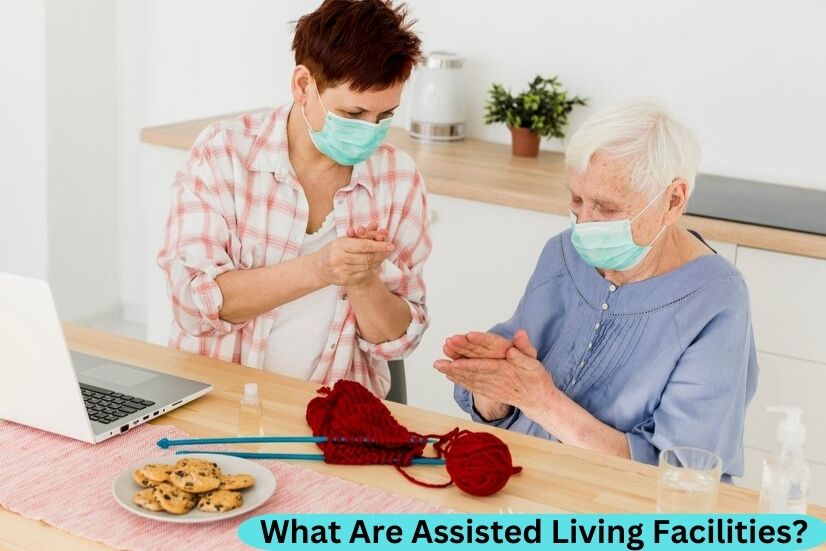
Have you ever wondered, “What are assisted living facilities?” These places are designed for older adults who need help with some daily tasks but still want to stay active and independent. They offer care, support, and a community where seniors can feel safe and comfortable.
In this article, we’ll explain everything about assisted living facilities. We’ll cover what they are, who they’re for, what services they provide, and how to choose the best one. Let’s get started!
An assisted living facility is where seniors can live while getting help with daily tasks like dressing, bathing, eating, or taking medicine. It’s different from a nursing home, where people need constant medical care. Instead, assisted living focuses on helping seniors stay as independent as possible.
These facilities usually have private or shared apartments. Residents can decorate their spaces to feel at home. Meals, activities, and care are provided, so seniors don’t have to worry about cooking or cleaning.
Assisted living makes life easier while keeping seniors happy and healthy.
Assisted living isn’t for everyone. It’s best for people who need help but can still do many things independently. Let’s look at who benefits the most:
Families also benefit. They no longer have to worry about their loved one’s safety and care, knowing they’re in good hands.
Every assisted living facility differs, but most offer various helpful services. Here are the most common ones:
Staff help residents bathe, dress, eat, or use the bathroom. This ensures that residents feel supported but still independent.
Seniors don’t have to worry about cooking. Meals are healthy, balanced, and served in dining rooms where residents can eat together.
No more worrying about cleaning or laundry. Staff take care of these chores so residents can relax.
From bingo and movie nights to exercise classes and holiday parties, there’s always something fun to do. Staying active helps seniors remain happy and healthy.
Many facilities offer rides to doctor appointments, grocery stores, and community outings, making it easy for seniors to stay connected.
Staff help manage medications, schedule doctor visits, and monitor overall health.
Life in an assisted living facility is structured but flexible. Residents can enjoy their day at their own pace. Here’s an example of a typical day:
Every day offers opportunities for socializing, learning, and relaxation.
Choosing the best-assisted living facility for a loved one can feel overwhelming. But it doesn’t have to be! Here are steps to make it easier:
Think about your loved one’s needs. Do they need lots of medical help, or are they primarily independent? Make a list of “must-haves” like transportation, social activities, or specialized care.
A tour can tell you a lot. Look for cleanliness, friendly staff, and happy residents. Ask about safety measures and daily schedules.
Check online reviews and ratings. Positive feedback from other families is a good sign of quality care.
Ask for a detailed breakdown of costs. Some facilities charge a flat monthly rate, while others charge extra for specific services. Make sure you know exactly what you’re paying for.
If a place feels welcoming and comfortable, it’s a good fit. Don’t be afraid to ask many questions to ensure it meets your loved one’s needs.
There are some common myths about assisted living that might make people hesitant. Let’s clear them up:
Assisted living costs depend on where you live and what services are included. In the U.S., it costs about $4,500 per month.
This might seem high, but it often covers housing, meals, activities, and care. Some facilities offer financial assistance or accept long-term care insurance, so ask about payment options.
Families choose assisted living for many reasons. Here are some of the most significant benefits:
Many assisted living facilities are pet-friendly and allow residents to bring small pets. Check with individual facilities for their specific pet policies.
Yes! Assisted living facilities typically offer activities like exercise classes, game nights, gardening, art sessions, and group outings to keep residents engaged and happy.
Most facilities have flexible visiting hours to encourage family interaction and connect residents with their loved ones.
Many facilities adjust care plans as residents’ needs change. If higher-level care is required, staff often help families explore other care options.
While most residents are seniors (usually 65+), younger individuals with specific health conditions may also qualify in some cases.
Assisted living facilities provide basic health support, such as medication management and wellness checks, but they don’t offer intensive medical care like a nursing home.
Signs include difficulty managing daily tasks, frequent forgetfulness, isolation, or safety concerns at home. A family discussion and professional evaluation can help decide.
Assisted living facilities provide a wonderful mix of support and independence. They’re perfect for seniors who want to live comfortably while getting extra help.
If you’re considering assisted living for yourself or a loved one, take the time to research, visit facilities, and ask questions. Finding the right fit can make a big difference.
Contact us today to learn more about Arctic Rosealf assisted living facilities and how they can help your family!